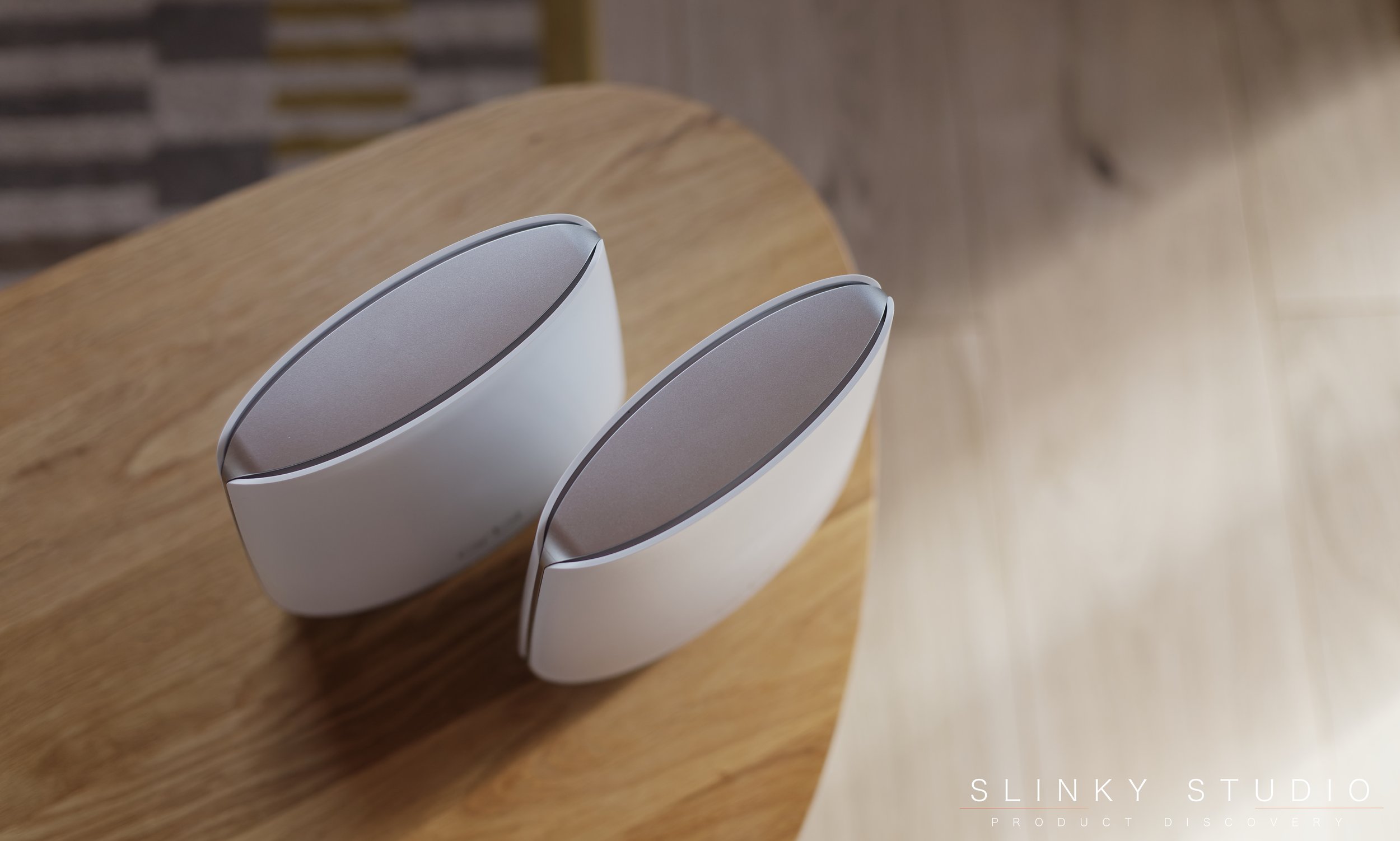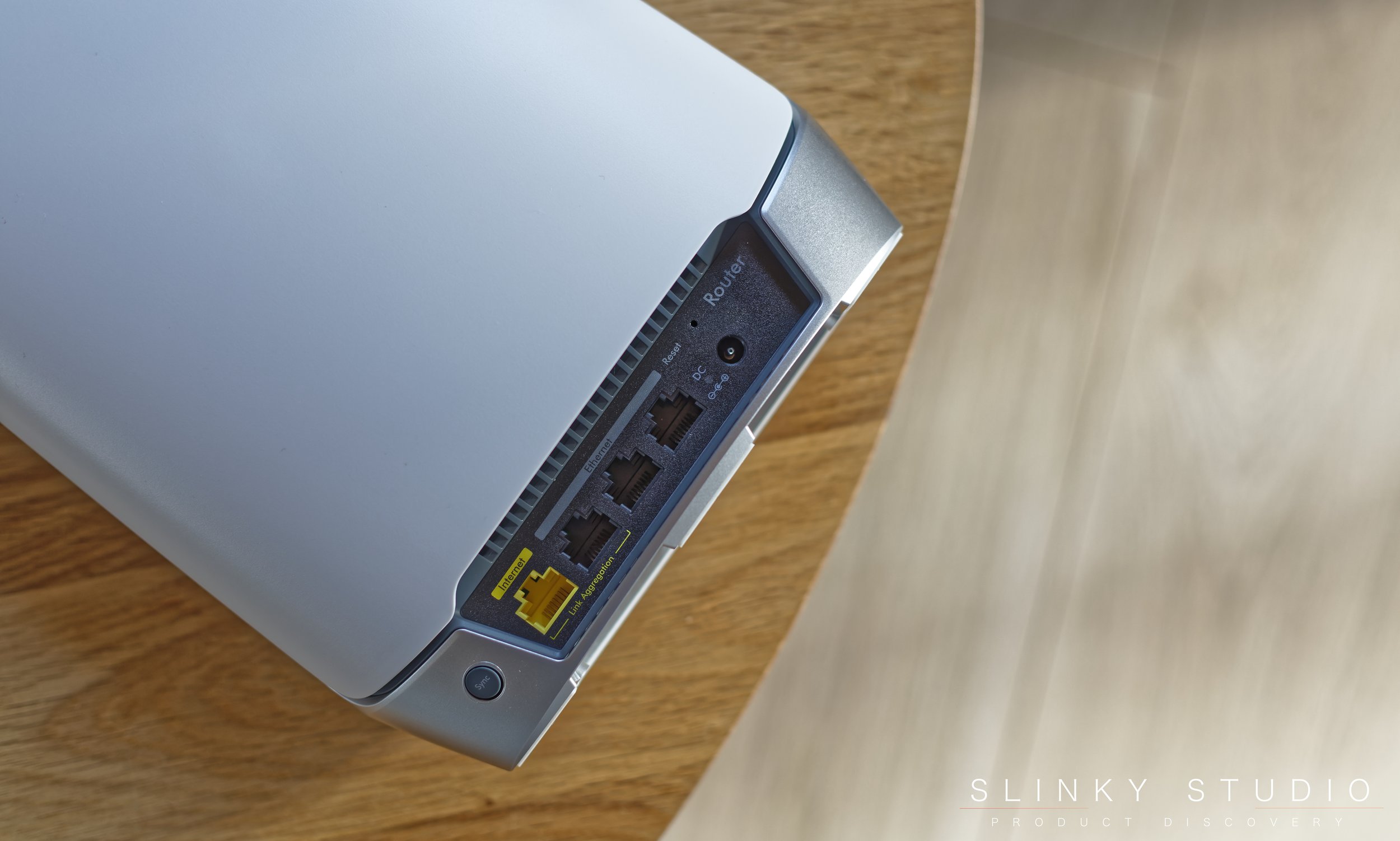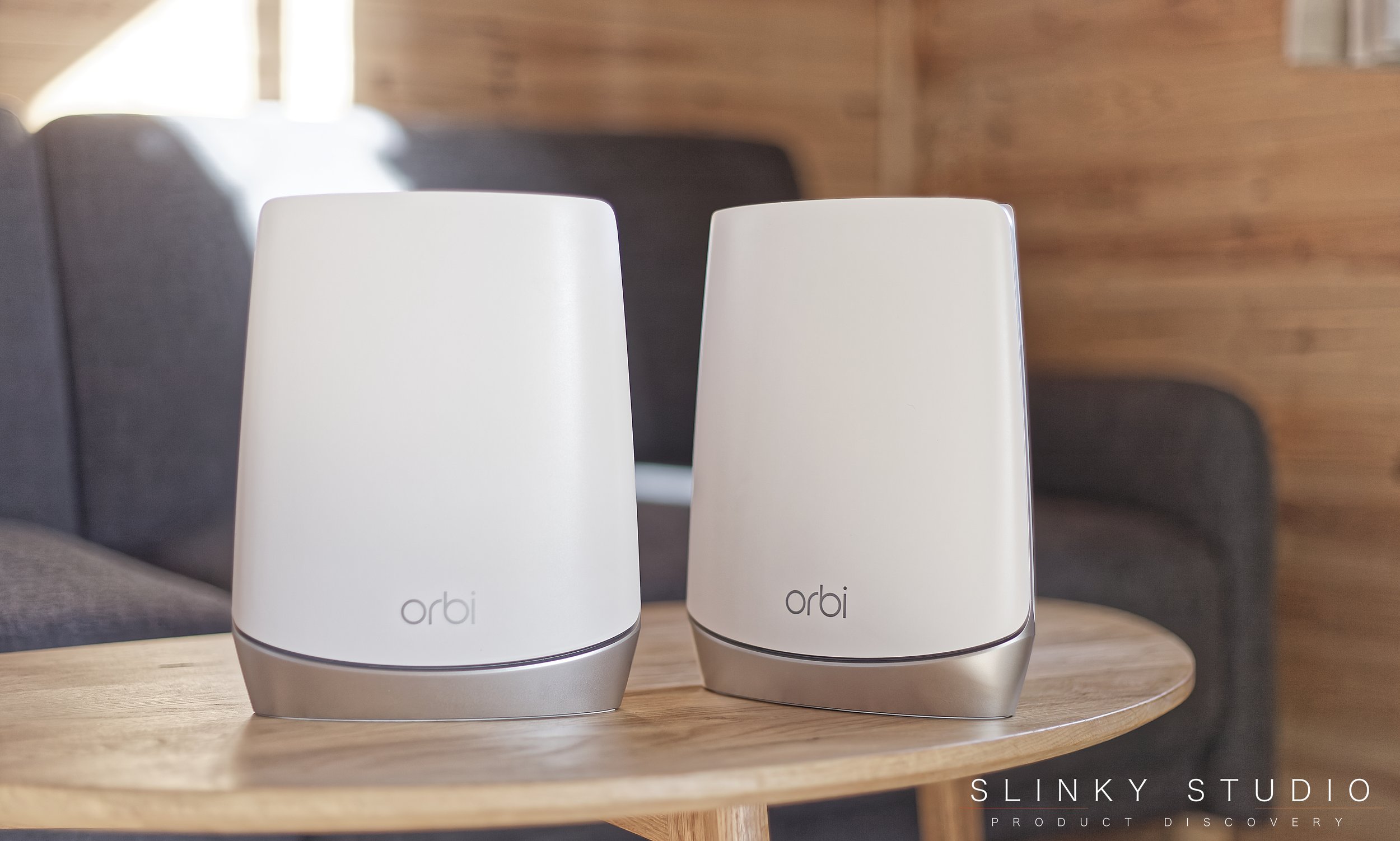Netgear Orbi Wi-Fi 6 Mesh System Review
When it comes to networking only three things matter, simplicity, speed and range. The Netgear Orbi mesh WiFi series (our model AX4200) are marketed to be able to meet those exact requirements using the latest iteration of WiFi 6. So has one of the oldest names within the world of networking finally got it right when it comes to consumer mesh networking? Buy on Amazon
Design
The Netgear Orbi router, with 3x gigabit ethernet ports (one connects to a modem), is identical in design to its satellites, featuring 2x gigabit ethernet ports, and these are much larger units than other mesh networking solutions we’ve used. They’re designed as devices that can have a bit more flexibility in placement, with each having its own power cable. This is a complete contrast to our previous networking solution, which was the Ubiquiti AmpliFi HD System, that was all about being compact and out of the way, with all-in-one mesh point plugs where the antenna can be independently moved on a clever magnetised joint system. In contrast, the Netgear Orbi satellites, which would have to be described as large objects, housing, as they do, 8 antennas, require greater consideration about where they are placed, needing to be supported by a table or something similar. A drawback for some, but this does mean your network isn’t dictated by wherever your plug socket may fall.
Netgear, aesthetically speaking, have designed a product that is distinctive and fairly attractive. However, the plastic mould lines and shaping, that leave a casing gap along the sides and top, have already presented themselves as a bit of a dust magnet.



Set-up & app
Out of the box we were directed to download the Orbi app onto an Apple iOS or Android device and proceed to plug the system in and follow the many onscreen steps via the app. It’s not a difficult process, but does take around 15-20 minutes in all and is much lengthier than the Ubiquiti AmpliFi HD set-up process which took 90 seconds to establish a fully functioning Wi-Fi network. Netgear require the creation of an online account and this part of the process should really be optional. We’d also prefer not to know about the upselling of Netgear Armour anti-virus and data theft protection service on sign up and also every time we glance at the app to check our network.
The app interface is tile based, showing options to see all devices on the network (can pause individual ones), internet speed tests, parental controls, the network configuration map, settings, guest Wi-Fi and a traffic metre for time based summaries of previous usage. One function we’ve really missed when using the Orbi app after using the AmpliFi app on our previous network is the ability to see realtime network demand and have it broken down per device. There’s also no way to prioritise a device, and there have been circumstances where we’ve needed to do this to make sure that a device isn’t interrupted by heavy network pressure.
A networking solution built for the home
We’ve been using the Netgear Orbi system exclusively for 3 weeks and in that time we haven’t had to reboot the system or had any connectivity issues with a network of 24+ devices scattered across it. Range compared with our AmpliFi HD mesh system, that features a router and four mesh points, proved more interesting than expected. The Orbi router and single satellite offers the same range as the AmpliFi router when set up with two mesh points, and devices don’t show any noticeable slowdown on the edges of the network. Netgear quoted 380m² or 4000ft² of range and it's entirely accurate even with the challenge of granite walls on our property. For 100% coverage an additional satellite would be needed in our usage case, to reach parts of the garden and outbuildings, but for the average sized British home this Orbi kit would be suitable.
One of the biggest selling points of this system is the compatibility with the latest generation WiFi 6 (802.11ax) standard, and it was also nice to see slightly faster Wi-Fi speeds received to all our Wi-Fi 6 compatible devices, where gains of 4-5Mbps download and 1Mbps upload were consistent compared to the AmpliFi HD system. Where you’ll notice these benefits in the real world, within households and offices, is when multiple WiFi 6 compatible devices are doing something like streaming 4K HD video content; if you have the bandwidth coming in, the Orbi system can support 6 devices doing just that simultaneously. When it came to online gaming our ping rates remained in the range of where they were with our AmpliFi network, with readouts between 10-22ms playing Call of Duty Mobile.
Verdict
On the credentials set out from the start, simplicity, speed and range, we can confidently say that the £449 Netgear Orbi Wi-Fi 6 mesh Wi-Fi networking system ticks all three once it’s up and running. It offers a rock solid, no hassle Wi-Fi network that works 24/7. The unnecessary distraction of upselling services within the App is a shame and the set-up process, whilst well explained, could be speeded up. However, this style of mesh networking, where the satellites can be manipulated in their location because they each have a power cable, will for some be particularly useful for flexibility to extend network range around the home that bit further. The weakest spot is the app, which serves as a window to view the basics, like connection speed test data, devices on the network and network status, but doesn’t offer any further analysis of realtime 'per device' usage or in-depth control of the network to be able to prioritise a specific device when bandwidth is being constrained by heavy network usage. We hope these are things that will be added in future app and firmware updates, as then the Netgear Orbi would be even more attractive, especially for those working from home. Buy on Amazon














